Happy belated Thanksgiving to our Canadian readers! It’s good to be back after not writing a Forgotten Silver column last month. I had far too much on my plate in August and preparing for the NBAAC Flea Market in Sussex, New Brunswick took a lot longer than usual.
Before the pandemic, we brought East Coast Toys and Games to New Brunswick twice a year for events. The other event, the East Coast Comic Expo, is scheduled to return in 2023. You wouldn’t think that we would run into comics people at a giant open-air flea market, but we did. We had an opportunity to hang out with Tony White (who was also set up at the event for the first time in a long time) and we saw our old pal Brad MacDonald who is the webmaster for the East Coast Comic Expo. We had a great time reconnecting with many of our regulars who we hadn’t seen since 2019. The world is starting to feel somewhat normal again.
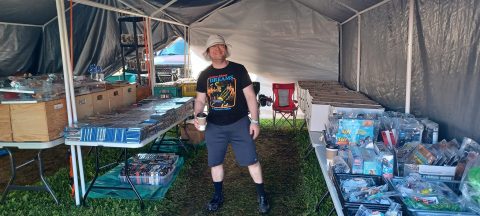
We purchased quite a few comics and other collectibles while we were in Sussex, but I only stumbled upon one comic from the Canadian Silver Age that I did not already have in my files: Cybercom, Heart of the Blue Mesa # 1. The comic was published by Matrix Graphic Series in 1987, just before the black-and-white comics crash destroyed the indie comics market. I have had this comic on my master list for quite a few years and hadn’t gotten around to purchasing an example even though the comic is often available on eBay and other online marketplaces for less than $10.
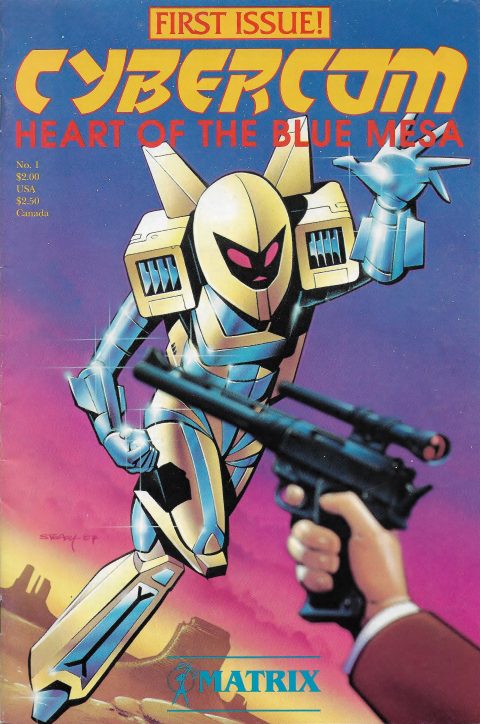
After we got back from Sussex and we were going through the comics we purchased, I was pleasantly surprised to learn that the creator of Cybercom, Heart of the Blue Mesa, Monique Renée (real name Monique MacNaughton), is a New Brunswicker. She wrote and drew this comic in Nackawic, New Brunswick, and went to St. Thomas University in Fredericton in the 1980s. I am deeply connected to this university. It is where my wife, Tania, and I met more than twenty years ago (and where I had my first teaching gig back in 2009). Monique MacNaughton was a key figure in the development of the comic scene in Fredericton in the 1990s and is still active in comics today. I’ll return to that next month.
Today, New Brunswick has a robust comic book scene. Several well-known creators call the province home and are active in the local scene, including world-class artists like Nick Bradshaw and Gisèle Lagacé, as well as Acadieman creator Dano LeBlanc. The number of indie creators in the province has also proliferated during the past decade.
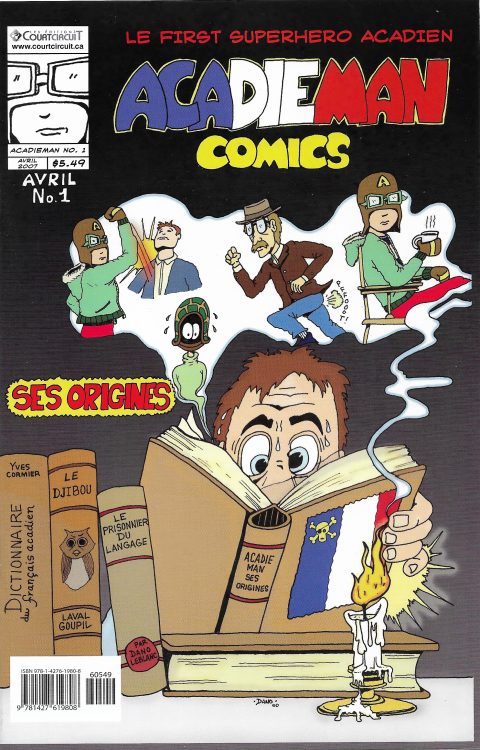
Two of Canada’s best comic shops have locations in New Brunswick: Calum “Cal” Johnston’s Strange Adventures got its start in Fredericton in 1992 (and continues to operate on York Street) and Jeff Smith’s Comic Hunter has been a Moncton mainstay for around two decades (through its flagship store is in Charlottetown, PEI). Long-time Comic Hunter Moncton store manager Remi Leclair is one of the hardest working people in the business and has helped contribute to Moncton becoming a comics hub. Comic Hunter just moved to a new location on St. George Street. I can’t wait to check it out later this year. The company also has a third location in Fredericton, making residents of the capital city well-served. Uptown Saint John has also had an excellent comic shop since 2013 called Heroes Beacon which is owned by Steve Henderson and Chris Duffield.
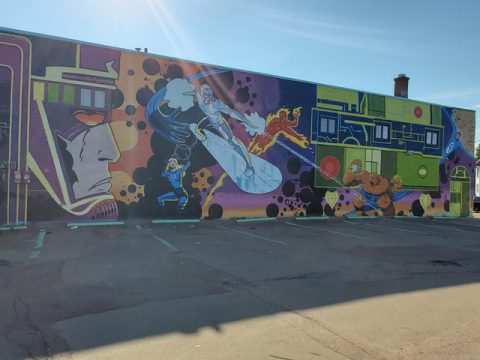
We are also less than two months away from a new convention, the Big Country Comics Expo, holding its first event in Fredericton. Unfortunately, we will not be able to attend this year. I hope that it is a success! I could go on and on about how much I love the New Brunswick comic scene. The East Coast Comic Expo is my favourite such event in Atlantic Canada and I can’t wait for it to return next year.
Yet, it wasn’t always this way. For much of the Canadian Silver Age, the comic scene in New Brunswick was non-existent. Things started to change in the 1980s thanks to several key figures who rarely get their due, but the scene didn’t solidify until well into the 1990s and 2000s. For the next two months let’s dig into the development of the comic scene in Canada’s “Picture Province.”
The early Canadian Silver Age is essentially devoid of comics created in New Brunswick. This is despite the fact that, for a time, Halifax’s Owen McCarron was one of the only people in Canada creating comics. Many of McCarron’s giveaway comics were circulated in New Brunswick and some were translated into French, such as Skoodi le Lapin and Capitaine Enviro. The latter comic (titled Captain Enviro in English) was commissioned by The Committee of Atlantic Environment Ministers and was intended for audiences in all three maritime provinces. Like all of McCarron’s comics, it was created at his studio in Halifax. From what I understand The Committee of Atlantic Environment Ministers also commissioned other comics from McCarron, including Keep Nova Scotia Beautiful Comics and The World of Sammy Seagull.
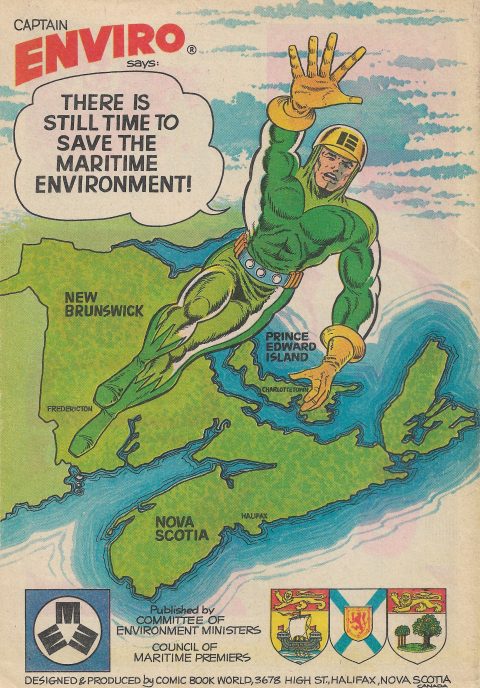
The first comic that I know of that was created in New Brunswick was 1977’s Garbage Collector, which was also commissioned by the Committee of Atlantic Environment Ministers. This comic was drawn by P. Walker and printed by Tribune Press in Sackville, NB. I wrote about both Captain Enviro and Garbage Collector a couple of years ago in a column focusing on environmental giveaways. Based on my current research these comics are essentially the only examples of Canadian comics from the 1970s that have any connection to the province of New Brunswick.
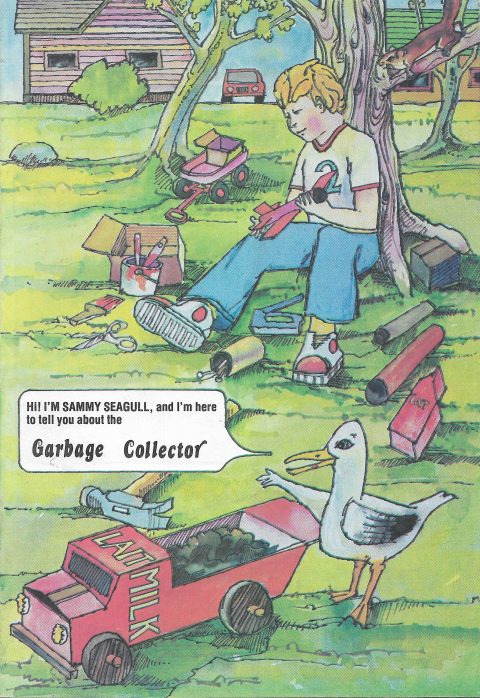
Things started to develop in earnest in New Brunswick in the 1980s. Indeed, two somewhat different scenes emerged in Saint John and Fredericton by the end of the decade. Yet, before these scenes gained momentum an isolated dalliance into comic book research by a university student in Sackville, NB, led to two publications.
In the mid-1980s, Daniel Theaker was studying flute at Mount Allison University. In his spare time, he was researching and cataloguing Canadian comic books. In doing so, he reached out to various comic creators including Dave Sim, Barry Blair, Ron Kasman, Mark Shainblum, Gabrielle Morrisette and Bernie Mireault.
The end result of Theaker’s labour were two editions of his comic-size magazine An Introduction to Canadian Comics. Despite his links to Sackville, NB, Theaker’s magazine was published in Ontario by Aurora Books. The magazine is something of a price guide that includes comics from the WECA, FECA and Canadian Silver Age eras lumped together. It also promotes upcoming comic conventions and comic publications in Ontario. The first edition sold enough copies that it had a second printing.
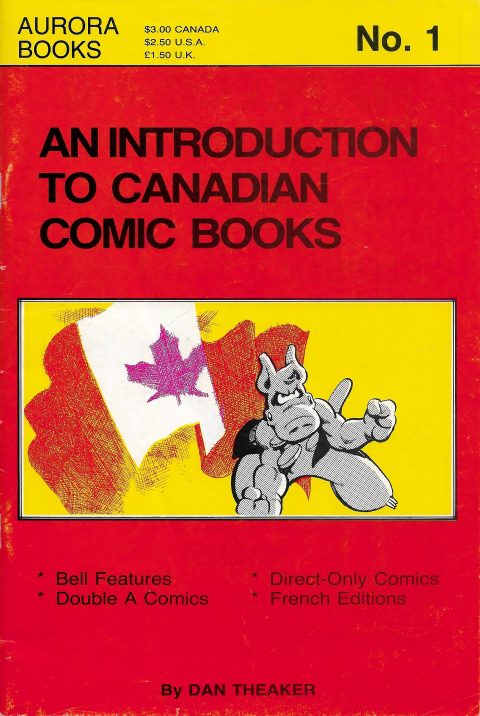
Theaker’s research is filled with gaps, as well as some errors that are too tangential for me to address here. However, when considering that this was a passion project by an undergraduate student in the pre-internet era, both of Theaker’s efforts are incredibly impressive. This is especially true considering that he was studying at a small university. The 1987 edition expands upon the first version’s price guide, while also sporting a cover by Barry Blair and including a couple of essays about Canadian comics (by Alexander Ross and Burt Heward). It even reprints a letter to Theaker from Strawberry Jam president Paul Stockton complaining about his company’s comics not being included in the 1986 edition and pointing out some of Theaker’s errors.
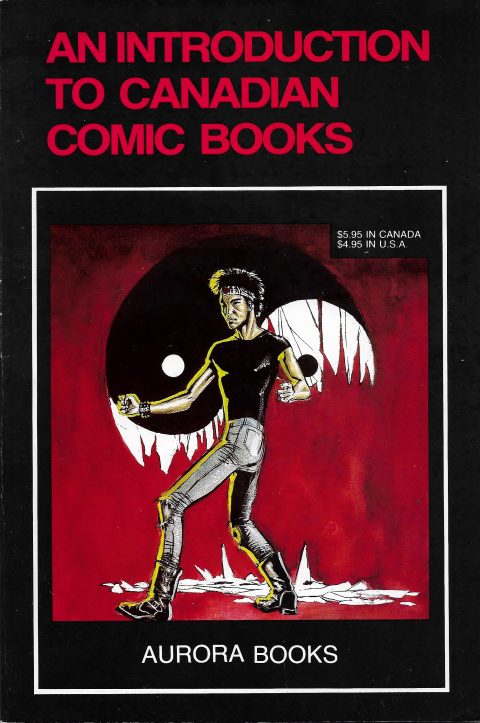
As a researcher, I have long felt indebted to people like Dan Theaker and others who came before me like Michael Hirsh, Patrick Loubert, John Bell, Mira Falardeau and even Comic Book Daily’s own Ivan Kocmarek. Nearly forty years ago, Theaker was researching and publishing about Canadian comics as a second-year undergraduate student at a small university in New Brunswick. I think it’s pretty inspiring stuff, even if by today’s standards his work is somewhat rudimentary. These two publications are worth taking a look at if you are interested in the history of Canadian comics and the development of comic fandom in this country.
Theaker did not release a third issue. I have sometimes wondered if this is because John Bell’s hallmark book Canuck Comics: A Guide to Comic Books Published in Canada was released in 1986 and achieves much of what Theaker was trying to do in much more detail. Today Theaker is an accomplished flautist living in Montreal and performing with the Orchestre Philharmonique Équitable.
Over time, I have come to believe that one of the key drivers of a robust local comic scene is the existence of a successful local comic book shop. As these sorts of shops began to proliferate across Canada in the late 1970s and early 1980s, two types of comic stores emerged. Some were heavily oriented around collecting and speculation, while others emphasized the development of local comic books and comic book talent. Anecdotally, this latter type of shop tended to last longer and leave an impact on local comic scenes.
I recently did some cursory research into the history of comic book shops in Nova Scotia during the 1980s and was surprised to find learn about more than a dozen such shops that seemed to be fly-by-night operations. Most of these stores were located in or around the cities of Halifax or Dartmouth (prior to amalgamation in 1996). A couple of comic shops in Halifax managed to break the mould. One of them was a mainstay of Halifax for thirty years: Sheldon Goldman’s Odyssey 2000. Goldman was the first person in Atlantic Canada to open a successful comic book shop and helped to promote comic book creators. For example, his store was the only one in the region that hosted Dave Sim in July 1983 as part of his first Canadian tour.
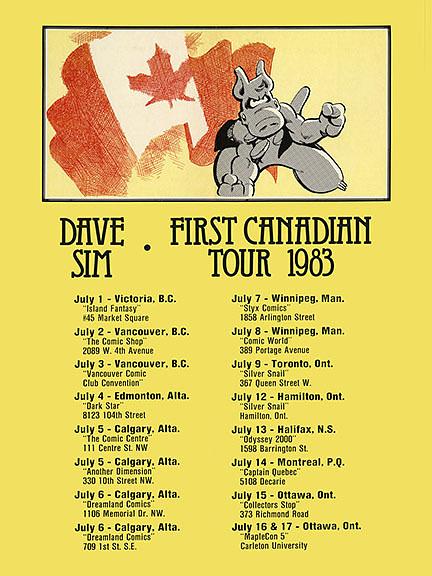
Goldman opened his shop in 1977 around the same time that Silver Snail opened in Toronto. When Odyssey 2000 closed in 2008, the shop was one of the longest-running in Canada. Shops like this were more than places where collectors speculated. They helped to promote the comic industry and comic creators.
Another shop that gained prominence in Halifax (and around the Maritimes) was Wilkie’s Wonderful World, which opened its first location in the mid-1980s. Its owner, Ian Wilkie, would eventually expand to operate several locations in the region, including stores in Moncton, Halifax, and Dartmouth at the same time. Wilkie would later operate locations in Bridgewater and Lunenburg (on the south shore of Nova Scotia). His last store closed in 2015.
Prior to getting into comics and collectibles, Ian Wilkie was a banker. He quickly found success peddling comics and collectibles and was arguably the most prominent comic shop owner in the Maritimes in the late 1980s and into the 1990s. However, Wilkie’s shops were not oriented toward building the comic book scene in the region.
Wilkie’s Wonderful World was also a family affair, with his son, Steve Wilkie, opening his own store in Fredericton, New Brunswick in the late 1980s called Collector’s Dream. Cal Johnston worked at Collector’s Dream as a university student and Strange Adventures emerged from its ashes after it closed in the early 1990s. It was only after Strange Adventures opened its first hole-in-the-wall shop on the second floor of a quaint building on Queen Street in Fredericton (adjacent to Backstreet Records, which is still in its original location) that Fredericton’s comic book scene really took off. Johnston moved to Halifax soon after and opened his second location.
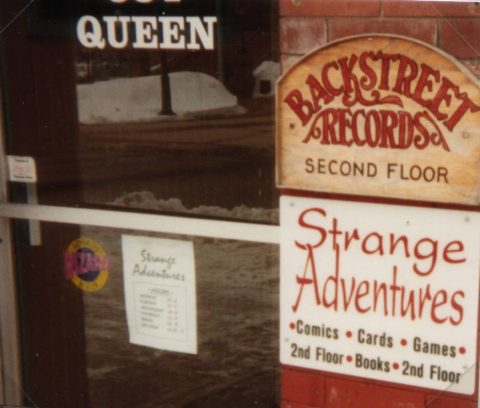
Today Strange Adventures is one of the best-known and most successful comic stores in all of Canada. Indeed, the Halifax location has helped to launch the careers of (and has even employed) many comic creators and other creative types including Kate Leth, Dave Howlett, Sean Jordan (aka Wordburglar) and Jason Eisner. Cape and Cowl owner Jay Aaron Roy once worked there too and regional comic stars like Nick Bradshaw, Ed Brisson and Kate Beaton have been known to frequent the shop. Strange Adventures was even Darwyn Cooke’s home base when he was still alive. Next month I will take a closer look at the comics that Cal Johnston and Monique MacNaughton put out during the Fredericton shop’s early days.
Despite the comic shops in Moncton and Fredericton being dominated by the Wilkie family in the 1980s, there was one shop in New Brunswick during that Canadian Silver Age that actively promoted local creators: Saint John’s Sorcerer Stone. Located at 88 King Street in the city’s uptown, Sorcerer Stone was New Brunswick’s premier comic book shop in the 1980s and a mainstay of the neighbourhood for nearly twenty years. Its owner, Stan Saunders, promoted local talents such as Jimmy Hachey, Tim Fallon and Barry Kincaide and even produced its own (extremely rare) comic fanzine called Sorcerer Stone Presents. Next month I will take a closer look at some of these creators and the significance of the Saint John scene during this era.

Our next big event is coming up soon. Hal-Con runs from October 28-30 at the Halifax Convention Centre. Tickets are still available and we are looking forward to being back at the event for the first time since 2019. Of interest to Forgotten Silver readers is that Canadian Silver Age great Ronn Sutton is one of this year’s featured guests. If you are planning to attend, make sure to stop by the East Coast Toys and Games booth to say hello. Hope to see you there!

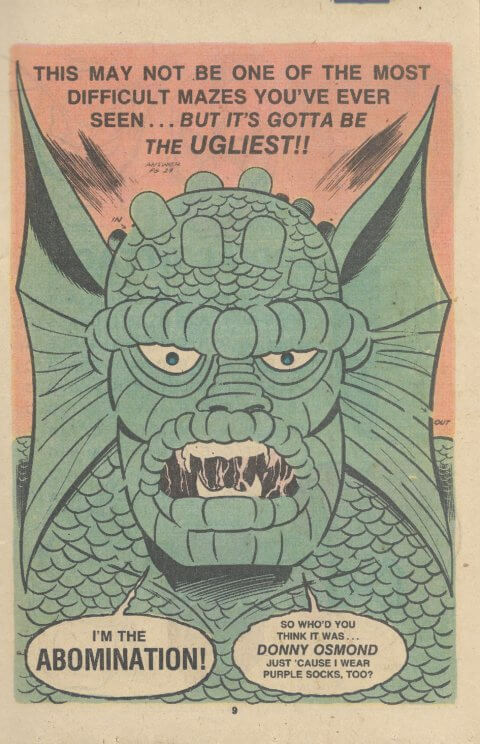
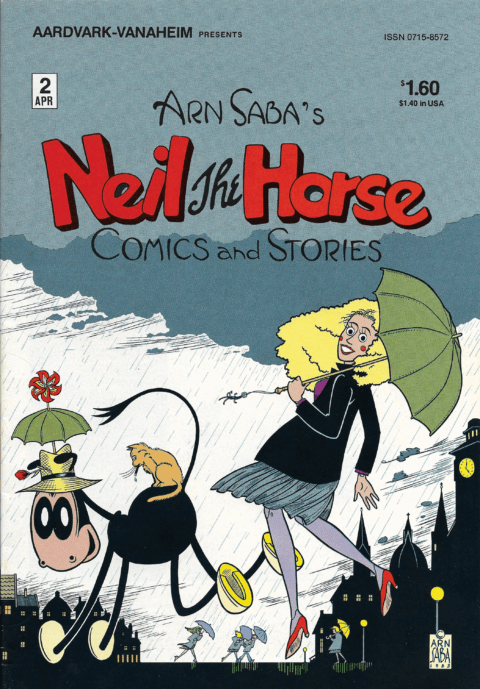

Thank you for sharing Brian. I hope the East coast is recovering
Thanks for your concern, David. Fiona was a heck of a storm. We lost power for a couple of days and had to throw some food away, but were okay otherwise. We had some friends in PEI who lost power for two weeks. Other than the hardest hit areas, most places were back to normal after a few days.